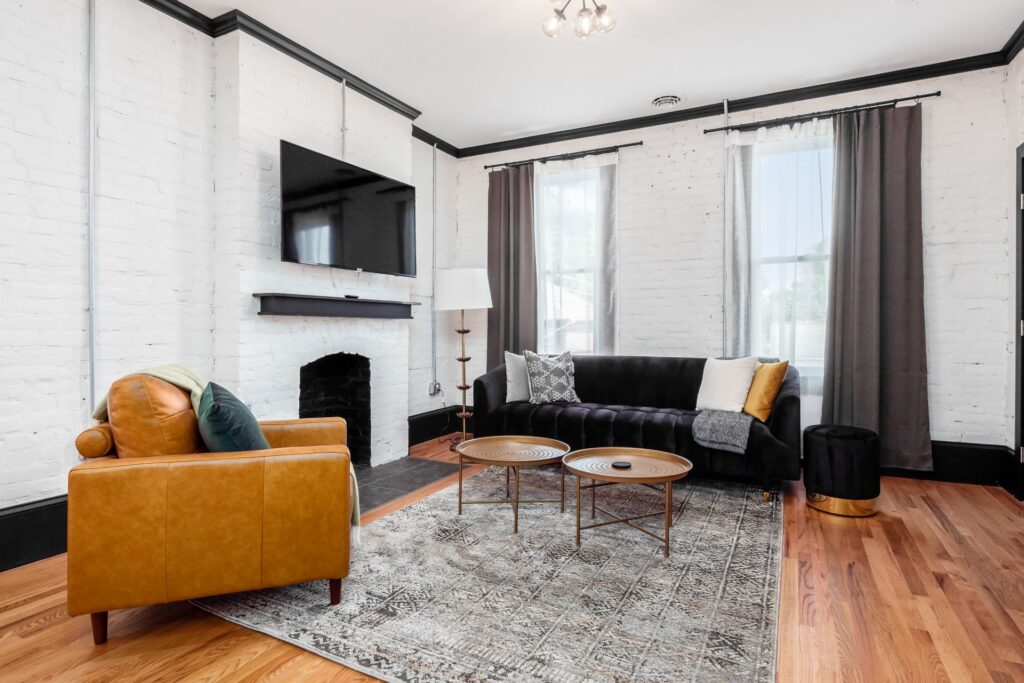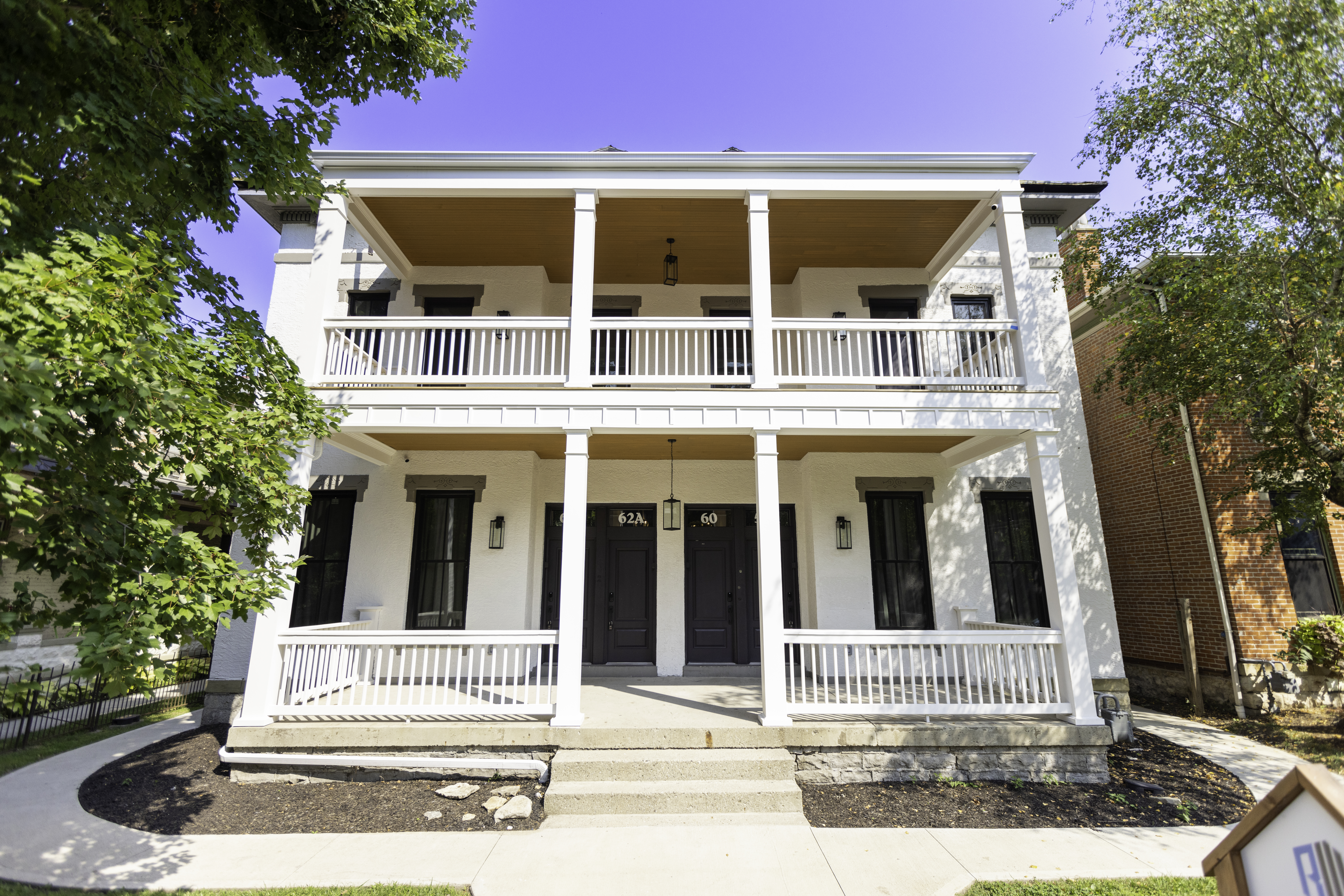
What’s An Airbnb Wishlist Group? Should You Use It?
You’ve probably seen the posts in a Facebook group. Someone promises that joining their special group for Airbnb wishlist groups will get you a ton of saves. You might have even heard this is a secret key to tricking the Airbnb algorithm into ranking you higher.
We get it. You are working hard to make your short-term rental a success, and you want to do everything possible to help your listing. But this particular “hack” isn’t just a waste of time. It could be actively damaging your listing’s performance.
Don’t worry, because you’re about to learn what actually helps you get noticed on Airbnb. Forget the empty promises of those Airbnb wishlist groups. It’s time to focus on what brings in real guests and builds a lasting business.

We’ve rounded up all of our Airbnb Hosting Must-Haves right here in our Amazon Store. Click here to grab everything you need to curate your property and start earning 5-star reviews.
Table Of Contents:
- The Wishlist Illusion: Why It Feels Productive
- Why Most Airbnb Wishlist Groups Are a Waste of Time
- How Fake Wishlists Can Actually Hurt Your Listing
- 6 Smarter Ways to Boost Your Listing (And Get Real Bookings)
- Conclusion
The Wishlist Illusion: Why It Feels Productive
So, you join one of these groups and start sharing your listing. Almost immediately, you see a jump in your Airbnb insights dashboard. Your views are up, your clicks are up, and you’re getting dozens of wishlist saves.
It feels great, doesn’t it? For a moment, it seems like you’ve found a shortcut to getting on the first page. These are all seemingly good things, but there is a major catch.
This activity gives you a quick rush, a feeling of progress. But this feeling is misleading you, and it’s important to understand why this instant gratification doesn’t translate to real success for your Airbnb account.
Why Most Airbnb Wishlist Groups Are a Waste of Time
The entire purpose of the wishlist feature is for actual travelers to save and organize potential stays. A guest planning a trip to your area uses it to compare their favorite places before making a booking decision. It’s a tool for genuine customer interest.
The people in these Facebook groups, however, aren’t genuine customers. They are other hosts, often from all over the world, participating in what are essentially “like-for-like” threads. They have no intention of ever booking your property, and many don’t even bother to click through your photos.
They aren’t your ideal guest, and they probably don’t even live in one of your feeder markets. This makes the wishlists they give you essentially meaningless from a business standpoint. It’s hollow data that does not represent real-world interest in any of the Airbnb services you offer.
If you’re spending time on wishlist groups, hoping for a quick win, you might also be overlooking one of the most important systems in your business—your cleaning and turnover process. If you’re using help for turnovers, it’s essential to protect your business with a clear Independent Contractor Agreement. This free resource helps you set expectations with your cleaning team or other helpers while protecting your STR legally. Grab the agreement here and check one more critical task off your host to-do list.
It’s Fake Engagement, Not Real Interest
Think about it. You’re spending your valuable time wishlisting other people’s properties just so they will do the same for you. This is busy work, not productive work. You could be using that time to make actual improvements to your property and guest experience.
This is very similar to old social media tactics that no longer work. Do you remember Instagram “comment pods” or “follow-for-follow” schemes? Users would agree to comment on each other’s posts to fake engagement, but it didn’t work because the interest wasn’t authentic. This kind of activity can even get you in trouble if a user decides to report inappropriate content.
The same logic applies here. You’re getting a dopamine hit from the activity, but you aren’t learning what a real guest actually wants. You’re building bad habits based on a shortcut that leads nowhere, wasting time that could be spent engaging with a real local host in host clubs to learn real strategies.
How Fake Wishlists Can Actually Hurt Your Listing
Here’s the part that really matters. Yes, the sudden activity might give you a small, temporary bump in views. But Airbnb’s algorithm is much smarter than these simple tricks and has evolved to prioritize genuine user engagement that leads to bookings.
The platform tracks more than just saves. It tracks the entire user journey, from the initial search word to the final booking, and the most important metric is conversion. How many people who view or wishlist your property actually go on to book it?
When you get hundreds of wishlists from these groups but zero bookings from them, you are sending a clear signal to the algorithm. Your signal is this: lots of people look, but nobody buys. This indicates a low conversion rate, which is a massive red flag that can negatively impact your visibility.
A consistently low conversion rate suggests your listing is not desirable to actual travelers. The algorithm will likely start to show your property to fewer people, causing your ranking to drop over time. You are effectively training the system to believe your listing is not a good choice, doing the opposite of what you intended.
6 Smarter Ways to Boost Your Listing (And Get Real Bookings)
Enough about what not to do. Let’s talk about what you should be focusing on. These are the strategies that lead to a truly successful furnished rental business. These actions bring in actual guests who pay your rates and leave great reviews.
1. Encourage Real Guests to Use the Wishlist Feature
The wishlist feature itself is a good thing when used correctly. Instead of getting fake saves from a host in another country, encourage real guests to use it. You can do this by adding a friendly call to action right in your listing description.
Try adding a sentence like, “Not ready to book yet? Add our home to your wishlist so you can easily find us for your future trip to the area.” A guest may keep multiple wishlists for different vacation ideas, so making it easy for them to save your property is a smart move.
You can also use this in your communication with past guests. When sending a thank you message after their stay, you could add something like, “We’d love to host you again. Be sure to wishlist our property so you can find us easily next time.” This helps you get repeat bookings from happy customers, who are the lifeblood of a healthy rental business.
2. Analyze and Adjust Your Pricing Strategy
Instead of chasing fake wishlists, spend that time making sure your pricing is competitive. If a real guest has wishlisted your property along with two of your competitors, what will make them choose you? Price is a huge factor in the final decision.
Use dynamic pricing tools or spend time manually researching your direct competition. What are properties with the same number of bedrooms and bathrooms charging for upcoming weekends and holidays? Tools like PriceLabs or AirDNA can give you a massive amount of data to help you stay competitive without leaving money on the table, often using aggregated data collected via performance cookies from various sources.
You can’t have blinders on here. You need to open up an incognito browser window and search as a guest would. Look at your competition’s calendars, nightly rates, and cleaning fees to understand what a potential guest sees and what you’re up against.
3. Schedule a Fresh Photoshoot
When was the last time you updated your photos? Photography styles change, and what looked amazing five years ago might look dated today. This is one of the single most impactful changes you can make to your listing to attract real bookings.
You might be too close to your own property to see it objectively. Ask a trusted friend or fellow local host for their honest opinion on your pictures. A professional photoshoot might seem like an expense, but quality photography is directly linked to higher earnings and can pay for itself quickly.
To get started, navigate to your hosting dashboard to manage your listing. You can add photos easily through the web interface; the upload location is clearly marked. The system makes it simple to start uploading; you can either choose files from your computer or just drag photos into the designated area. After you upload upload the new images, you can preview exit preview mode to see how it looks before publishing. Make sure your saved photos are high-resolution and compelling.
4. Respond to Every Single Guest Review
Responding to reviews is not just for the guest who already left; it is free marketing space for all your future guests. People who are careful about planning their trips read owner responses to get a sense of the host’s personality and professionalism. This is your chance to shine.
Use this space to be professional, warm, and helpful. If someone praises your clean home, thank them and say you look forward to their next visit. If they mention a small issue, thank them for the feedback and explain how you have already addressed it, showing you are proactive and attentive.
This shows potential guests that you are an attentive and caring host who respects the community guidelines. According to Airbnb, responding to reviews demonstrates that you value your guests’ feedback. This builds trust before a guest even books, and your latest reply will be visible to everyone browsing your listing.
5. Learn From Your Reviews and Improve Your Space
Sometimes you get a less-than-perfect review. It’s tempting to get defensive or angry, but the best hosts use this as a valuable learning opportunity. Try to remove your ego from the situation and ask yourself: do they have a point?
If a guest says the kitchen is missing a specific utensil, maybe it’s time to add it. If someone mentions the Wi-Fi is slow, it might be time for an upgrade. Continuously making small improvements based on guest feedback is how you go from a 4.6 rating to a 4.9 rating, which can make a big difference in bookings.
Don’t be shy about asking for reviews after a great stay, as every business you interact with does the same. You can also visit the Airbnb community center to learn from others. The community cafe section is a great place to post question and get advice from a community manager or experienced hosts in the forum topics.
6. Study Your Competition and Find an Edge
Do you truly know who your competitors are? I mean the properties that are almost identical to yours in location, size, and style. Spend some time being a guest and shop for places in your own market to see your listing through their eyes.
Look at their listings closely and create a simple comparison chart. What amenities do they offer that you don’t? We once helped two hosts in our business coaching program who had units in the same building. One was consistently outperforming the other, and the reason was surprisingly simple: the more successful host had king-sized beds, while the other had queens.
Maybe your competitors are all pet-friendly and you are not. Perhaps they all have a hot tub or offer unique Airbnb experiences. Figure out what you can add or change to give yourself a competitive advantage, and check out host guides in the resource center for inspiration.
| Fake ‘Hack’ Strategy | Effective ‘Real Work’ Strategy |
|---|---|
| Joining wishlist groups. | Asking real guests to wishlist in your description/messages. |
| Hoping for an algorithm ‘trick’. | Optimizing your pricing to be competitive. |
| Getting fake saves. | Investing in new, professional photography. |
| Spending time on Facebook. | Spending time responding to all reviews. |
| Ignoring your listing’s details. | Studying competitors and adding in-demand amenities. |
Conclusion
It’s very tempting to look for an easy button when building a business. When someone tells you a simple hack will solve your problems, it’s normal to want to believe them. But building a sustainable, profitable short-term rental business takes real work.
Using Airbnb wishlist groups for fake engagement feels like you’re making progress, but they are just a distraction. Your time is your most valuable asset as a host. Spend it on the activities that make a genuine difference in your listing’s quality and appeal to real travelers.
Focus on improving your photos, optimizing your pricing, and creating an amazing guest experience. These are the things that will truly boost your listing and fill your calendar for years to come. That is how you build a real business, not by chasing illusions.
While fake saves won’t boost your booking rate, having a well-stocked property absolutely will. Guests consistently mention missing items in their reviews—so beat them to it by making sure your space has everything they expect (and more). Our Airbnb Essentials Checklist covers every room and helps you avoid last-minute supply runs or bad reviews. Download the free checklist here and start impressing guests with thoughtful, 5-star details.
Calling All Hosts: The Hosting Handbook
If you loved this post we invite you to check out our one-stop-shop solution for hosts everywhere —the Hosting Handbook! While you can download all the easy to consume, step-by-step tips we use in our own hosting business and create the ultimate “book” the Hosting Handbook is so much more than that! If you’ve consumed or content for years (or just met us!) this is the reference guide for all the amazing and tactical tips we have for running a profitable and, more importantly hospitable, short-term rental. How do we price for pets? How do we fold our towels? What sheets do we buy? How do I purchase a short-term rental? All these questions (and more!) can be answered in the Hosting Handbook! Check it out now!
Happy Hosting!



show comments
HIDE comments